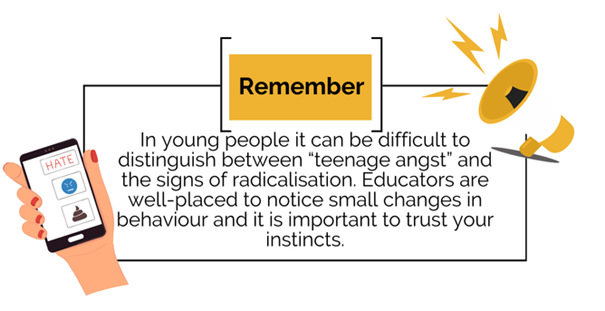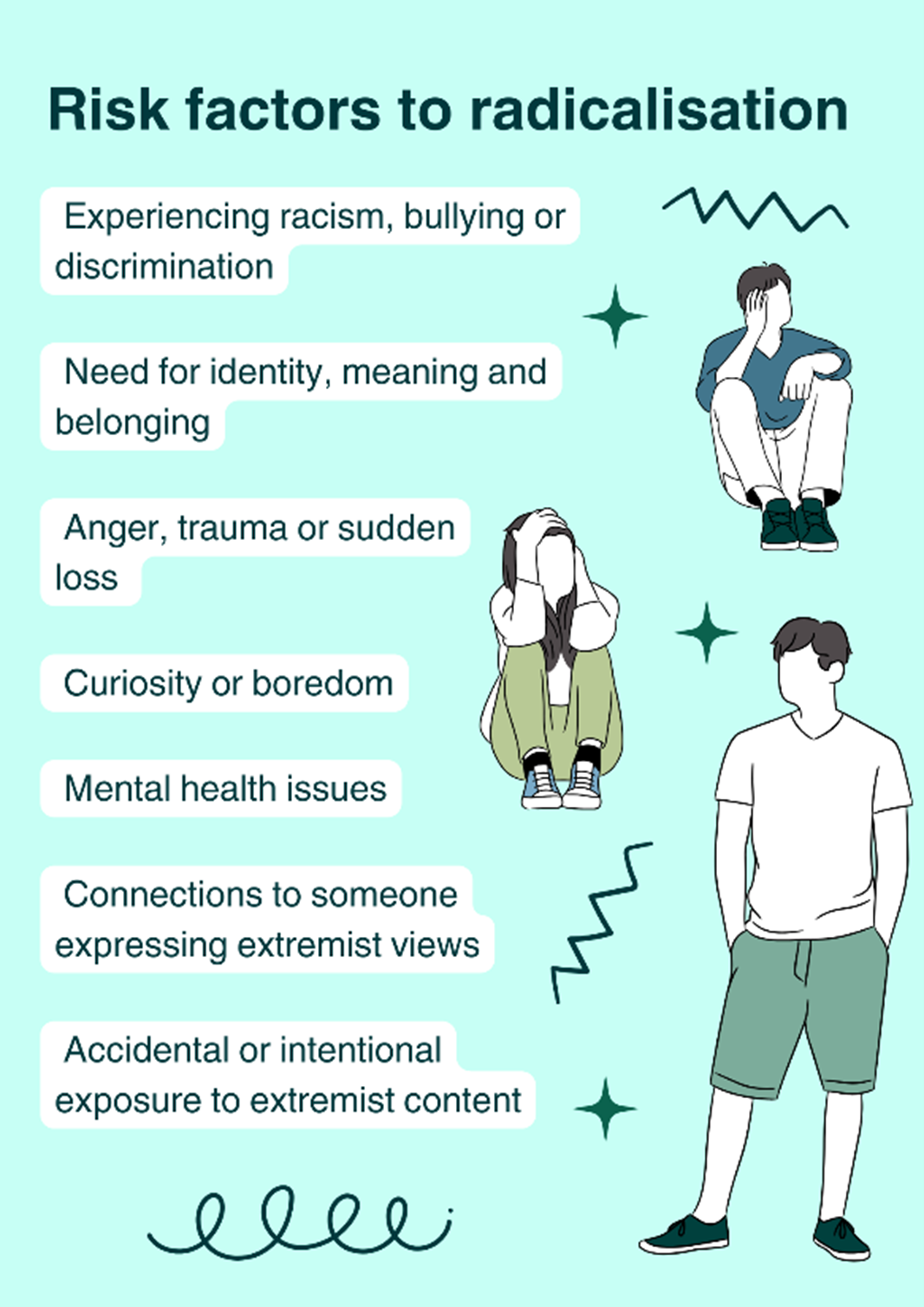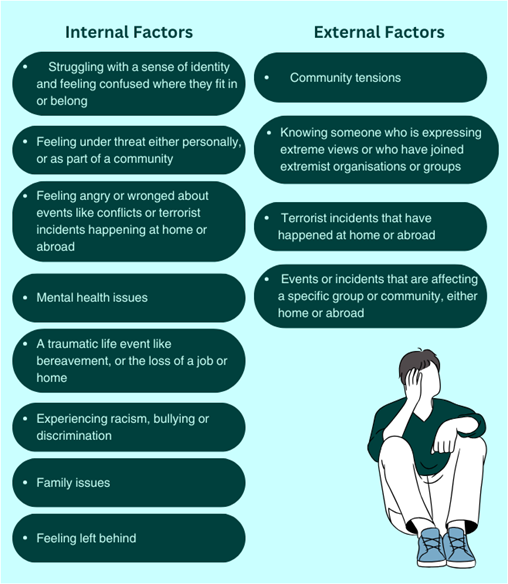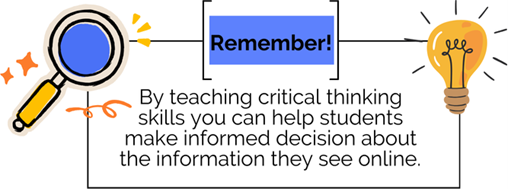Violent extremism refers to an individual or group who supports, justifies, threatens or uses violence with the aim of radically changing the nature of government, religion or society. This violence is often targeted against groups seen as threatening violent extremists’ success or survival or undermining their worldview.
For more information about extremism visit the Act Early website.
What is terrorist and violent extremist content?
Terrorist and violent extremist content (TVEC) online refers to illegal material that promotes extreme views and will likely cause significant harm if viewed by the public. This includes content such as:
- Websites made by terrorist or extremist organisations
- Videos or livestream perpetrator-led footage of a terrorist attack
- Manifestos and other materials produced by individuals or organisations that promote
For more information about TVEC visit Te Tari Taiwhenua Department of Internal Affairs.

What is online radicalisation?
Online radicalisation is the process by which a person is radicalised or groomed through the internet to support terrorist or extremist ideologies. This may include exposure to online material such as articles, images, videos and speeches that promote extreme ideologies, terrorism or violence.
What could make a young person vulnerable to radicalisation?
There is no single, defined pathway to radicalisation. There are some behaviours and patterns to be aware of. The New Zealand Security Intelligence Service have released a public guide to raise awareness of some of the key warning signs that are most concerning in individuals on a pathway to violent extremism.
Posters and factsheets
The below poster highlights some of the risk factors that make students more vulnerable to online radicalisation. Remember just because someone is displaying certain behaviours does not mean they are becoming radicalised. The below behaviours are concerning when they occur alongside other activities.

Act Early have a outlined a number of factors that educators should be aware of that can make a young person vulnerable to radicalisation.
- Act Early – Reduce the risk of radicalisation

Videos
We have created a video that explains what violent extremism is and what material is classified as illegal in Aotearoa New Zealand.
Teachers guide
Talks that Matter have developed resources including a video and facilitation guide to prepare educators, a lesson plan, video for young people and helpful templates. These resources have been developed in consultation with New Zealand educators and law enforcement to allow teachers and kaiako to foster a safe, open environment where rangatahi feel empowered to share their views, explore alternative and/or diverse perspectives.
Extreme Dialogue have created a pack for educators that includes a facilitator guide to help manage difficult conversations about extremism, videos and presentation to help develop young people’s critical thinking abilities.
The Think: Protect: Connect toolkit is a resource to support schools in safeguarding children and young people, including those with Autism Spectrum Conditions, from online radicalisation and extremism.
The United Nations have developed a teachers guide to help you respond to violent extremism and to help create a classroom climate that is inclusive and conducive to respectful dialogue, open discussion and critical thinking.

Educate Against Hate have advice and resources for teachers to support you in managing conversations about terrorism, violent extremism and radicalisation.